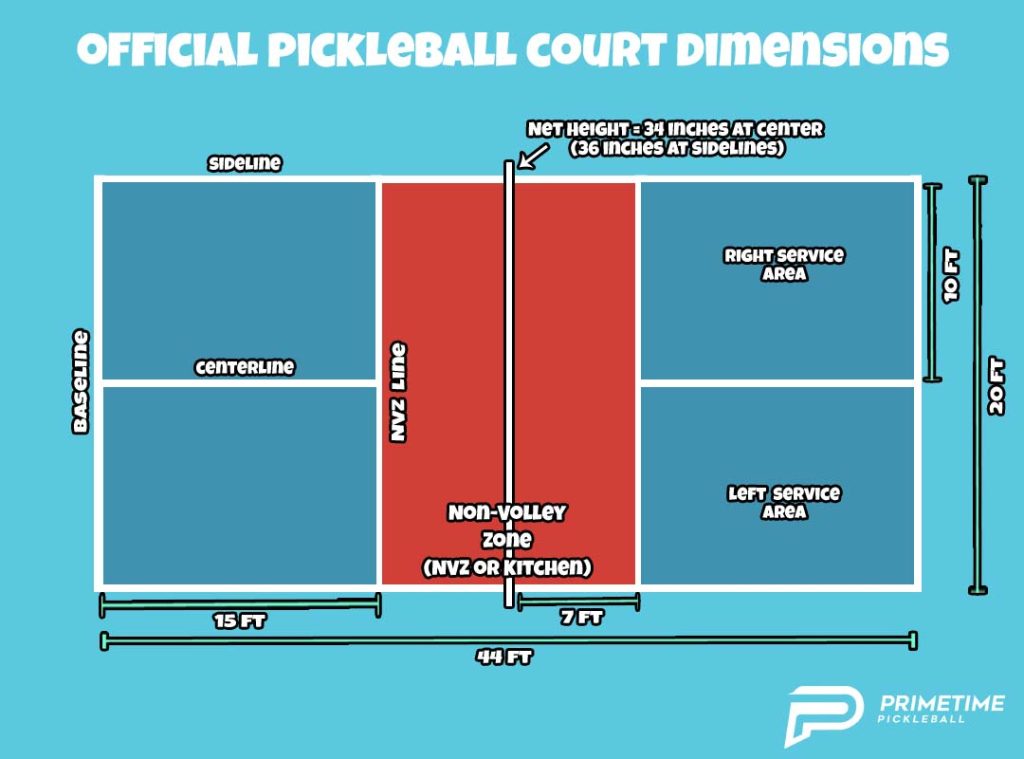Key Factors in the Building of Pickleball Courts: From Site Selection to Last Surfaces
The building of pickleball courts encompasses an array of essential variables, beginning with the option of an appropriate site that stabilizes ease of access with environmental factors to consider. Necessary components such as court dimensions, surface materials, and drain systems dramatically impact not just the quality of play but also the long life of the facility.
Site Option Requirements
When beginning on the building of pickleball courts, it is vital to pin down the website option requirements that will ensure optimal playability and availability. The area has to be conveniently reachable for gamers, preferably located near suburbs or area centers, to encourage engagement.
In addition, the surface should be degree and steady, as unequal ground can lead to security hazards and influence gameplay. Sufficient water drainage is also essential; selecting a site with excellent water drainage will certainly help maintain court conditions throughout unfavorable weather condition.
Another vital factor to consider is the schedule of energies. Access to power and water is required for illumination and maintenance purposes. In addition, distance to auto parking centers is crucial, promoting very easy access for gamers and viewers alike.
Ecological variables can not be overlooked; natural color from trees can enhance player convenience, while exposure to dominating winds might interfere with play. Last but not least, zoning laws and area support ought to be taken into consideration to guarantee that the project straightens with local standards and gets the support it requires for effective application. By very carefully evaluating these requirements, stakeholders can develop an inviting and functional environment for pickleball enthusiasts.
Court Capacities and Format
To guarantee optimum gameplay and adherence to guidelines, the dimensions and layout of pickleball courts have to be meticulously defined. A typical pickleball court gauges 20 feet in size and 44 feet in length for both singles and increases play.
The net height is evaluated 36 inches at the sidelines and 34 inches at the facility, producing a mild dip that influences round trajectory. Court markings are just as important; lines need to be 2 inches broad and distinctive in color to make certain presence.
Furthermore, a buffer zone surrounding the court is recommended, typically expanding 5 to 10 feet beyond the sidelines and baselines to accommodate players' movements and improve security. Appropriate format and measurements not just guarantee conformity with main guidelines yet additionally enhance the general playing experience, suiting both recreational and competitive play. Mindful preparation in these areas is paramount to the successful building of pickleball courts.
Surface Area Material Options
Picking the best surface area material for pickleball courts is crucial for guaranteeing optimum gamer performance and safety and security. The selection of surface can considerably influence gameplay, consisting of ball bounce, traction, and player convenience.
There are numerous alternatives available, each with its distinctive attributes. Asphalt is a preferred option because of its longevity and reduced maintenance requirements. It supplies a solid having fun surface that can stand up to different weather yet might need periodic resurfacing.
Concrete is another widely utilized product, supplying exceptional long life and a smooth coating. It permits constant ball bounce yet can be difficult on gamers' joints, making it much less desirable for long-term play without appropriate padding.
For those looking for boosted convenience and shock absorption, supported acrylic surface areas offer a viable option. These surface areas integrate a base layer with an acrylic topcoat, offering enhanced grip and a softer feeling, which is useful for decreasing the threat of injuries.
Last but not least, artificial turf is getting traction, particularly for multi-purpose centers. Its convenience and reduced upkeep requires make her comment is here it an eye-catching choice, though it might not offer the very same ball response as traditional hard courts. Mindful factor to consider of these alternatives will certainly guarantee an ideal having fun setting.
Drainage and Illumination Considerations
Appropriate drainage and reliable lighting are essential parts in the building and construction of pickleball courts, considerably affecting visit this site both playability and security. Ample drain systems prevent water buildup, which can bring about unsafe surfaces and damage to the court framework. A well-designed drain strategy includes sloped surfaces and ideal products to promote water move away from the playing location - Illinois and midwest. This not only preserves the stability of the court but additionally lessens downtime due to bad weather.
Lights is just as critical, particularly for courts planned for night use. The placement of lighting components must be purposefully prepared to get rid of darkness and give even circulation of light throughout the court.

Final Finishes and Maintenance
After addressing water drainage and lighting factors to consider, interest transforms to the last coatings and ongoing maintenance of pickleball courts. Typical alternatives consist of acrylic coatings and specialized sporting activities surface areas that offer optimal traction and padding.

Seasonal maintenance might consist of resurfacing every few years, depending on use and environmental aspects. Effectively keeping webs, court lines, and surrounding areas is equally crucial to offer a risk-free and enjoyable having fun experience. By buying top quality surfaces and sticking to an organized upkeep timetable, facility proprietors can ensure their pickleball courts continue to be in exceptional condition for years to find.
Conclusion
To conclude, the effective building and construction of pickleball courts depends upon precise interest to a number of crucial elements. Website choice must focus on ease of access and terrain security, while court dimensions and layout should use this link abide by ideal requirements for gameplay. The choice of surface area product significantly affects gamer safety and efficiency. In addition, effective drainage and sufficient illumination add to court longevity and exposure. Ultimately, high quality surfaces and a durable maintenance timetable are vital for preserving the court's problem, improving the general experience for players and viewers alike.